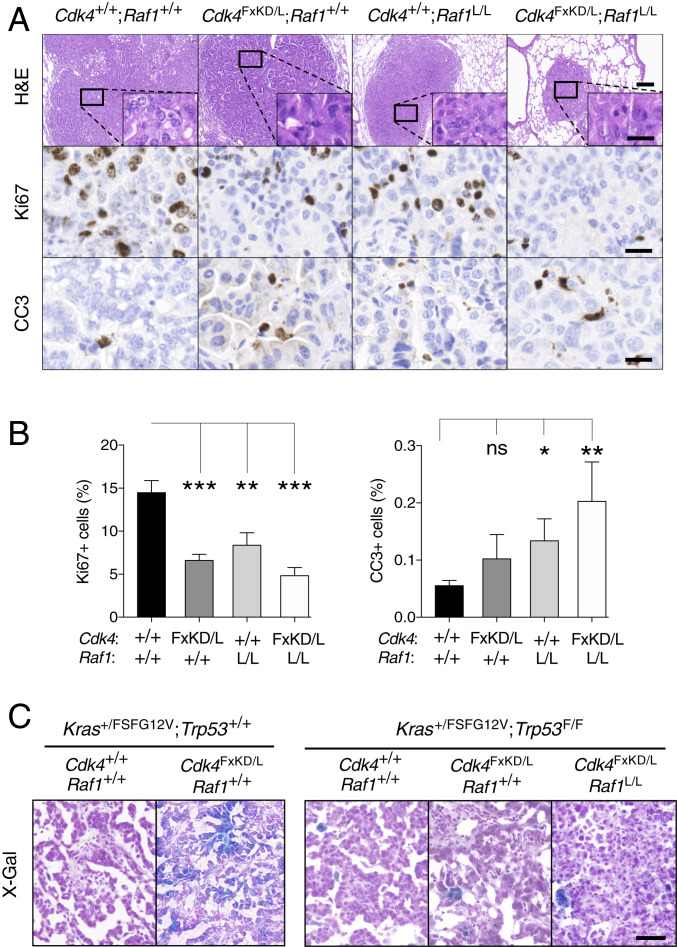Fig. 2.
CDK4 inactivation and RAF1 ablation cooperate to reduce tumor proliferation and induce cell death. (A) Representative images of H&E, Ki67, and cleaved caspase 3 (CC3) stainings in paraffin-embedded sections of tumors from Kras+/FSFG12V;Trp53F/F;hUBC-CreERT2+/T mice harboring Cdk4+/+;Raf1+/+, Cdk4FxKD/L;Raf1+/+, Cdk4+/+;Raf1L/L, and Cdk4FxKD/L;Raf1L/L alleles after 9 wk of TX exposure. (Scale bars, 0.2 [H&E lower magnification] and 0.02 mm [H&E inset, Ki67 and CC3].) (B) Quantification of the percentage of Ki67+ and CC3+ cells present in sections of tumors from Kras+/FSFG12V;Trp53F/F;hUBC-CreERT2+/T mice harboring Cdk4+/+;Raf1+/+ (n = 3 mice/28 tumors) (solid bar), Cdk4FxKD/L;Raf1+/+ (n = 3 mice/28 tumors) (dark gray bar), Cdk4+/+;Raf1L/L (n = 3 mice/23 tumors) (light gray bar), and Cdk4FxKD/L;Raf1L/L (n = 8 mice/28 tumors) (open bar) alleles after 9 wk of TX exposure. Error bars indicate mean ± SEM. P values were calculated using the unpaired Student´s t test. *P < 0.05, **P < 0.01, and ***P < 0.001, ns, not significant. (C) Representative images of senescent cells identified by X-Gal staining in OCT sections of tumors from Kras+/FSFG12V;Trp53+/+;hUBC-CreERT2+/T mice harboring Cdk4+/+;Raf1+/+ and Cdk4FxKD/L;Raf1+/+ alleles and Kras+/FSFG12V;Trp53F/F;hUBC-CreERT2+/T mice harboring Cdk4+/+;Raf1+/+, Cdk4FxKD/L;Raf1+/+ and Cdk4FxKD/L;Raf1L/L alleles after 9 wk of TX exposure. (Scale bar, 0.05 mm.)

